 Brutal and the beast
Brutal and the beast
Nissan’s new Juke is a startling baby crossover, stretching genres and boundaries of good taste alike. Just like the north east’s most celebrated Brutalist architecture – the car park from ‘Get Carter’, says Tim Pollard
Photography mark fagelson

 Where’s Stephen Bayley when you need him? Here we are, photographing the outlandish new Nissan Juke in the Gateshead car park that starred in cult 1971 gangster flick Get Carter and CAR’s debonair design critic is nowhere to be seen. We’re sure an aesthete like Stephen would unravel the Brutalist values of concrete jungle and car alike, but in his absence us mere amateurs are left in stunned silence to stare in wonder. God they’re both ugly.
Where’s Stephen Bayley when you need him? Here we are, photographing the outlandish new Nissan Juke in the Gateshead car park that starred in cult 1971 gangster flick Get Carter and CAR’s debonair design critic is nowhere to be seen. We’re sure an aesthete like Stephen would unravel the Brutalist values of concrete jungle and car alike, but in his absence us mere amateurs are left in stunned silence to stare in wonder. God they’re both ugly.
The Juke feels at home here. A latticework of angular concrete soars above, like some evil henchman’s vessel in an early Star Wars film set, only this one swaps Hans Solo’s radar-dodging matt grey for the mottled sludge-brown of ageing cement and old people’s shoes. The demolition men arrive in 12 hours to raze one of the nation’s most iconic car parks and ours is the last car to set wheel on its ’60s ramps and walkways.
 There’s a spiritual link between car and concrete. The Juke’s built just a dozen miles away in Nissan’s Sunderland plant and, on a clear day, you can see the factory from the 12th floor. Is there a deeper artistic connection? Gateshead’s Trinity Square civic car park was designed in 1962 by Owen Luder and proved divisive from day one; we’d wager that even its biggest fans won’t find the new Juke beautiful either. Striking, perhaps. Unlike anything else out there, certainly. Something quite unprintable, most likely.
There’s a spiritual link between car and concrete. The Juke’s built just a dozen miles away in Nissan’s Sunderland plant and, on a clear day, you can see the factory from the 12th floor. Is there a deeper artistic connection? Gateshead’s Trinity Square civic car park was designed in 1962 by Owen Luder and proved divisive from day one; we’d wager that even its biggest fans won’t find the new Juke beautiful either. Striking, perhaps. Unlike anything else out there, certainly. Something quite unprintable, most likely.
Where Brutalist architecture favoured perpendicular lines, bare concrete edifice and an honest exposure of a building’s innards, the Juke has an altogether more modern DNA cooked up in Nissan’s London design studio. From those extraordinary front lights – big dinner-plate headlamps down below, thin slivers of day running beams up top – to the ‘wine rack’ grille and mash-up of coupé glasshouse mated to SUV bottom, the Juke is wantonly different. It’s like wearing a t-shirt with a rude logo; you may as well jump up and down like a toddler and scream, ‘Look at me! Look at me!’
 Nissan reckons there’s a breed of young man out there who craves such attention and the marketeers have even coined a name for this group: urban players. Yep, sounds like Nissan’s gunning for the pushy geezers who drive estate agent Minis and lower-league German fayre around our trendier districts, iPhones clamped to their ears as they chew gum and chat up birds. They’ll certainly stand out in the Juke, a car whose discord Chris Bangle would surely applaud.There’s reason behind the stylistic chutzpah. Nissan has become something of a crossover pioneer in recent years; it by no means invented the genre, but with the Murano, Qashqai and now Juke, not to mention Infiniti’s FX and EX, the Japanese have easily the widest – and wildest – range of road-biased SUVs in Europe. The runaway success of the Qashqai in particular spurred Nissan on to experiment with a smaller crossover. It’s sold three quarters of a million Qashqais in Europe in just three years and 80 per cent of customers are new to Nissan. In the mainstream car business, that’s gold dust.
Nissan reckons there’s a breed of young man out there who craves such attention and the marketeers have even coined a name for this group: urban players. Yep, sounds like Nissan’s gunning for the pushy geezers who drive estate agent Minis and lower-league German fayre around our trendier districts, iPhones clamped to their ears as they chew gum and chat up birds. They’ll certainly stand out in the Juke, a car whose discord Chris Bangle would surely applaud.There’s reason behind the stylistic chutzpah. Nissan has become something of a crossover pioneer in recent years; it by no means invented the genre, but with the Murano, Qashqai and now Juke, not to mention Infiniti’s FX and EX, the Japanese have easily the widest – and wildest – range of road-biased SUVs in Europe. The runaway success of the Qashqai in particular spurred Nissan on to experiment with a smaller crossover. It’s sold three quarters of a million Qashqais in Europe in just three years and 80 per cent of customers are new to Nissan. In the mainstream car business, that’s gold dust.
This was the backdrop to the dramatic Qazana concept car, which surprised the 2009 Geneva motor show. We were met by angular proportions, a face that even its mother would find challenging and its squat roofline angled like a GTR’s. Is it over-egging the pudding to say the Juke has stayed true to the concept? These days most show cars are designed after the production vehicle has been signed off. They’re a warm-up act to the main event.

 The Juke might look futuristic, but the tech is decidedly of the here and now. Underneath lies the Nissan-Renault Alliance B platform, so it’s essentially a Micra-Note/Clio-Modus stretched and updated to fill baby crossover shoes. Sensibly, most Jukes – in fact more than 95 per cent – will remain front-wheel drive, although the top-spec 1.6 petrol turbo can be had with four-wheel drive. Together with its mandatory CVT gearbox, this transmission choice adds 139kg to the kerbweight, but there’s a Mini Cooper S clobbering 189.5PS to play with and Nissan mentions the Juke in the same breath as proper pocket rockets. Game on.
The Juke might look futuristic, but the tech is decidedly of the here and now. Underneath lies the Nissan-Renault Alliance B platform, so it’s essentially a Micra-Note/Clio-Modus stretched and updated to fill baby crossover shoes. Sensibly, most Jukes – in fact more than 95 per cent – will remain front-wheel drive, although the top-spec 1.6 petrol turbo can be had with four-wheel drive. Together with its mandatory CVT gearbox, this transmission choice adds 139kg to the kerbweight, but there’s a Mini Cooper S clobbering 189.5PS to play with and Nissan mentions the Juke in the same breath as proper pocket rockets. Game on.
Shellshocked from our encounter with the arch wackiness outside, we clamber in and observe a refreshingly modern, far simpler cabin. There are no scary lights or gobstopper holes peppering the surfaces in here: it’s crisply designed and let down only by unrelentingly brittle plastics. You sit a plump cushion’s worth higher than you would in a supermini, but you’d hardly call this the command driving position beloved of SUV owners. A lack of telescopic wheel adjustment and short seat runners belie the Juke’s supermini roots, but even tall drivers should get comfy.
 Nissan hasn’t lost all its sparkle inside. The centre console is modelled on a motorcycle tank and painted a vibrant metallic red. You can choose a quieter silver, but somehow the buzzy red suits the Juke’s cheeky persona. Another concession to the fashionista is a new system of soft keys for the heating and dynamic controls; depending on which mode you select, the shiny black buttons are backlit with different commands, reducing clutter and mixing the best bits from variable touchscreen and good old-fashioned physical buttons. Works a treat.
Nissan hasn’t lost all its sparkle inside. The centre console is modelled on a motorcycle tank and painted a vibrant metallic red. You can choose a quieter silver, but somehow the buzzy red suits the Juke’s cheeky persona. Another concession to the fashionista is a new system of soft keys for the heating and dynamic controls; depending on which mode you select, the shiny black buttons are backlit with different commands, reducing clutter and mixing the best bits from variable touchscreen and good old-fashioned physical buttons. Works a treat.
The view from the driver’s seat is interesting, those raised headlamps acting like the dorsal humps on a Ferrari 612 Scaglietti’s bonnet. They look like supersized slivers of bubble wrap and you want to lean out of the window and just give them a massive pop. We suppress our urges and drive off, on a mission to see if the Juke has substance to back up its risqué style. This new direct-injection turbo 1.6 is strong, serving up oodles of torque irrespective of revs. It’s a little gruff and short of character, but Nissan claims 8.4sec 0-62mph and it feels sprightly, ruined only by the machinations of the latest CVT auto ’box. I’m rarely a fan of pulleys and belts and here too the CVT sends us yowling and screaming and the 1.6 rarely settles into a rhythm until I nudge into auto over-ride, flicking between six pre-arranged ‘ratios’. Give me a twin-clutch ’box or a full auto any day.
This new direct-injection turbo 1.6 is strong, serving up oodles of torque irrespective of revs. It’s a little gruff and short of character, but Nissan claims 8.4sec 0-62mph and it feels sprightly, ruined only by the machinations of the latest CVT auto ’box. I’m rarely a fan of pulleys and belts and here too the CVT sends us yowling and screaming and the 1.6 rarely settles into a rhythm until I nudge into auto over-ride, flicking between six pre-arranged ‘ratios’. Give me a twin-clutch ’box or a full auto any day.
Mind you, in manual mode the Juke comes alive. The steering response is really fast, lending the crossover an agility that will be welcomed by drivers used to a Mini’s pointiness. We dart into corners, controlling the revs with the gearstick and in slower, tight bends you can feel the torque vectoring at the rear axle; this 4wd model shuffles power between each wheel and in extremis shunts all torque to a single rear wheel.

 It’s a modestly fun package, yet ultimately the Juke is nowhere near as rewarding as a Mini, let alone one of Renaultsport’s hot hatches spun from the same hardware. The Juke’s chassis simply isn’t as sophisticated and, after initial bite in a corner, the Nissan lurches a little as if the front and rear end aren’t quite talking the same language. Still, there’s a pliancy often missing in a Mini. We’re rolling on 17-inch rims, yet the ride is absorbent and soaks up the worst road scars (lesser models with torsion beam rear axles are a little busier). In fact, the Juke is a quiet drive all round, only those big door mirrors kicking up a bluster at motorway speeds.
It’s a modestly fun package, yet ultimately the Juke is nowhere near as rewarding as a Mini, let alone one of Renaultsport’s hot hatches spun from the same hardware. The Juke’s chassis simply isn’t as sophisticated and, after initial bite in a corner, the Nissan lurches a little as if the front and rear end aren’t quite talking the same language. Still, there’s a pliancy often missing in a Mini. We’re rolling on 17-inch rims, yet the ride is absorbent and soaks up the worst road scars (lesser models with torsion beam rear axles are a little busier). In fact, the Juke is a quiet drive all round, only those big door mirrors kicking up a bluster at motorway speeds.
In response to Mini’s Sport switch and Alfa’s DNA toggle, the Juke lets drivers prod those reconfigurable buttons to flick between dynamic settings. There’s Normal, Sport (weightier electric power steering, faster gearchanges) and Eco (soft throttle map, less power-sapping climate control). The green setting reminds me of being drunk – everything takes a bit longer and the car’s responses are muffled, so you end up stamping on the accelerator more. Catch 22.
Two other engines will be available at the Juke’s September launch: a boggo 1.6-litre naturally aspirated petrol and a 1.5 dCi diesel. We drove the latter in manual form and found a sweet spot in the range; it musters the same torque as the petrol turbo and its peppy performance feels well judged. The stick shift is so quick-witted and precise that it makes me wonder if the 2wd Juke 1.6 turbo thus equipped without the CVT could unleash a GTI on stilts after all.
Seeing a reflection of ourselves in the car in front provides a jolt back to reality. Behind the wheel you forget how odd-looking the Juke is. The more time passes, the more we wonder if it couldn’t, in fact, double up as an Infiniti. Imagine a baby FX! This is design at its most strutting peacockish, with none of the dreary asceticism of our Gateshead backdrop. And did we mention the conceptual echoes of the more expensive, but equally squat Range Rover Evoque?
Despite its compact footprint (the Juke measures just 4135mm long) it’s quite roomy in the Nissan’s cabin. Those rear doors are slender and accessed by door handles hidden in the C-pillars, lending a hint of rakish three-door in profile. Once you squeeze through the tight rear opening there’s actually plenty of space in the back for most adults and all children. The wide, flat boot’s quite big for anyone who’s put up with a Mini hatchback’s risible loadbay, but that sloping roofline puts paid to any hopes of offering Skoda Yeti utility.
 We park on the spot where Michael Caine, playing Get Carter’s eponymous London gangster, hurled Jack Brumby off the car park to his death and mull over the Juke’s fortunes. Many will dismiss it out of hand as a gimmick while others will abhor the divisive styling. And yet as we
We park on the spot where Michael Caine, playing Get Carter’s eponymous London gangster, hurled Jack Brumby off the car park to his death and mull over the Juke’s fortunes. Many will dismiss it out of hand as a gimmick while others will abhor the divisive styling. And yet as we
emember the scores of tame Polos and dumpy Corsas plying our townscapes, it’s hard not to applaud Nissan’s ambition to spice things up. It makes Volkswagen’s homespun small car families look distinctly limited in ambition.
What would Carter have made of the Juke? He’d have liked its aggressive stance and British swagger, although I could imagine some effing and blinding on first acquaintance. It’s a fittingly brutal design that’ll tip some over the edge, but we just wonder if it’ll stand the test of time.
The Gateshead car park was the future once, yet, by the time you read this, it’ll be reduced to a pile of rubble. I fancy the Juke will have a more lasting, leftfield appeal in the footnotes of Nissan’s incredibly varied design history.
Gateshead’s civic car park was designed in 1962 by Owen Luder and proved divisive from day one; we’d wager that even its biggest fans won’t find the new Juke beautiful either
 The Nissan Juke is like a shrunken Qashqai – turned up to 13. Nissan hopes to tempt bright young things out of their Minis and warm hatches with its blend of compact dimensions, a face you’ll never forget and prices from Rs 9.31lakh. Metallic red centre console and armrests lift interior. Just mind out for those
The Nissan Juke is like a shrunken Qashqai – turned up to 13. Nissan hopes to tempt bright young things out of their Minis and warm hatches with its blend of compact dimensions, a face you’ll never forget and prices from Rs 9.31lakh. Metallic red centre console and armrests lift interior. Just mind out for those
hiny plastics
nissan juke 1.6 DiG-t
Price I Rs 14.56lakh(UK) on sale in UK I September 2010 Engine I 1618cc four-cylinder petrol, 189.5PS @ 5600rpm, 240Nm @ 2000-5200rpm transmission I CVT auto with six manual steps, four-wheel drive suspension I MacPherson struts front, multi-link rear axle Weight/made from I 1441kg/steel Length/width/height I 4135/1765/1570mm performance I 8.4sec 0-100km/h, 200km/h, 13.17kmpl rating I 11111









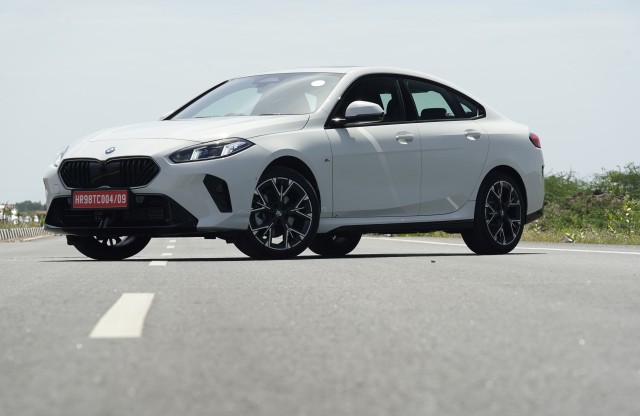
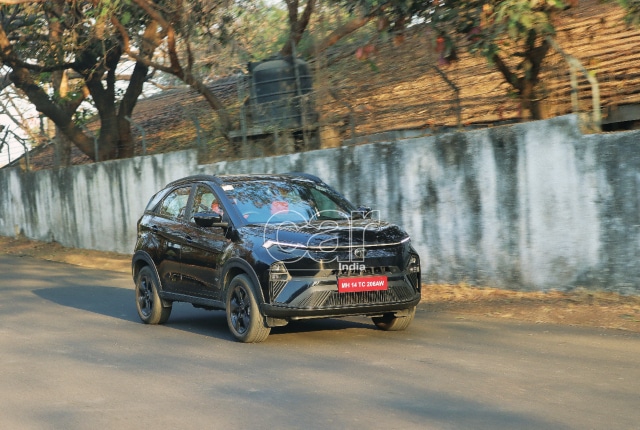

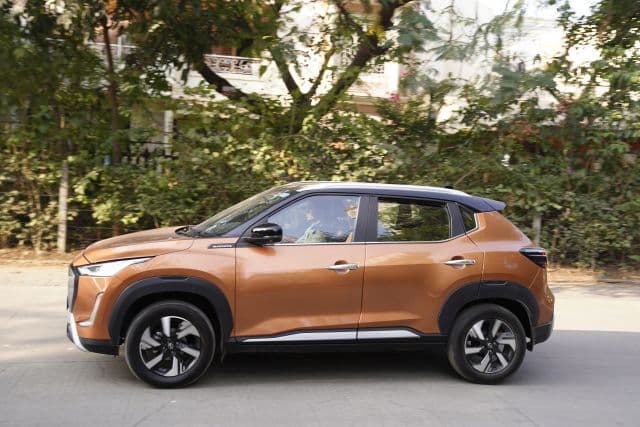
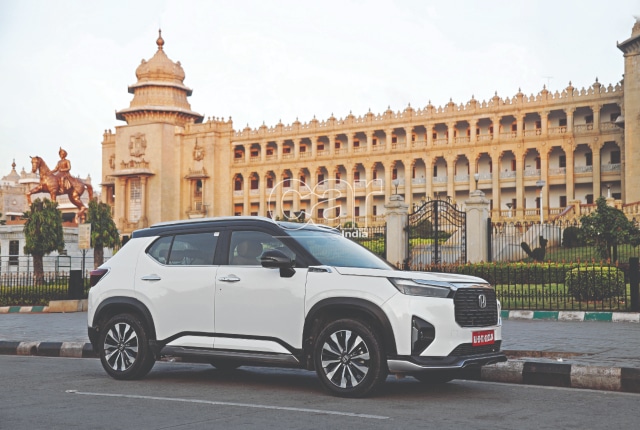
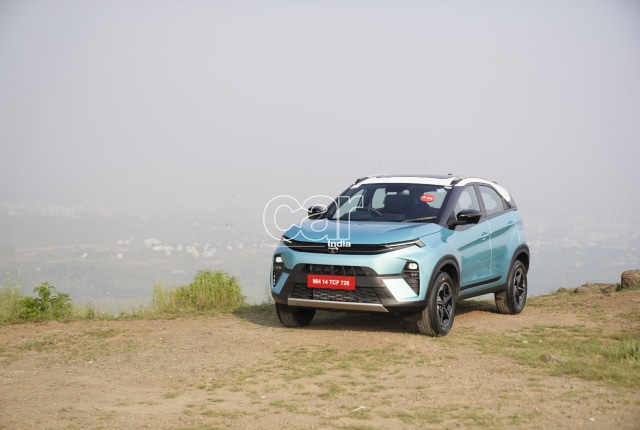
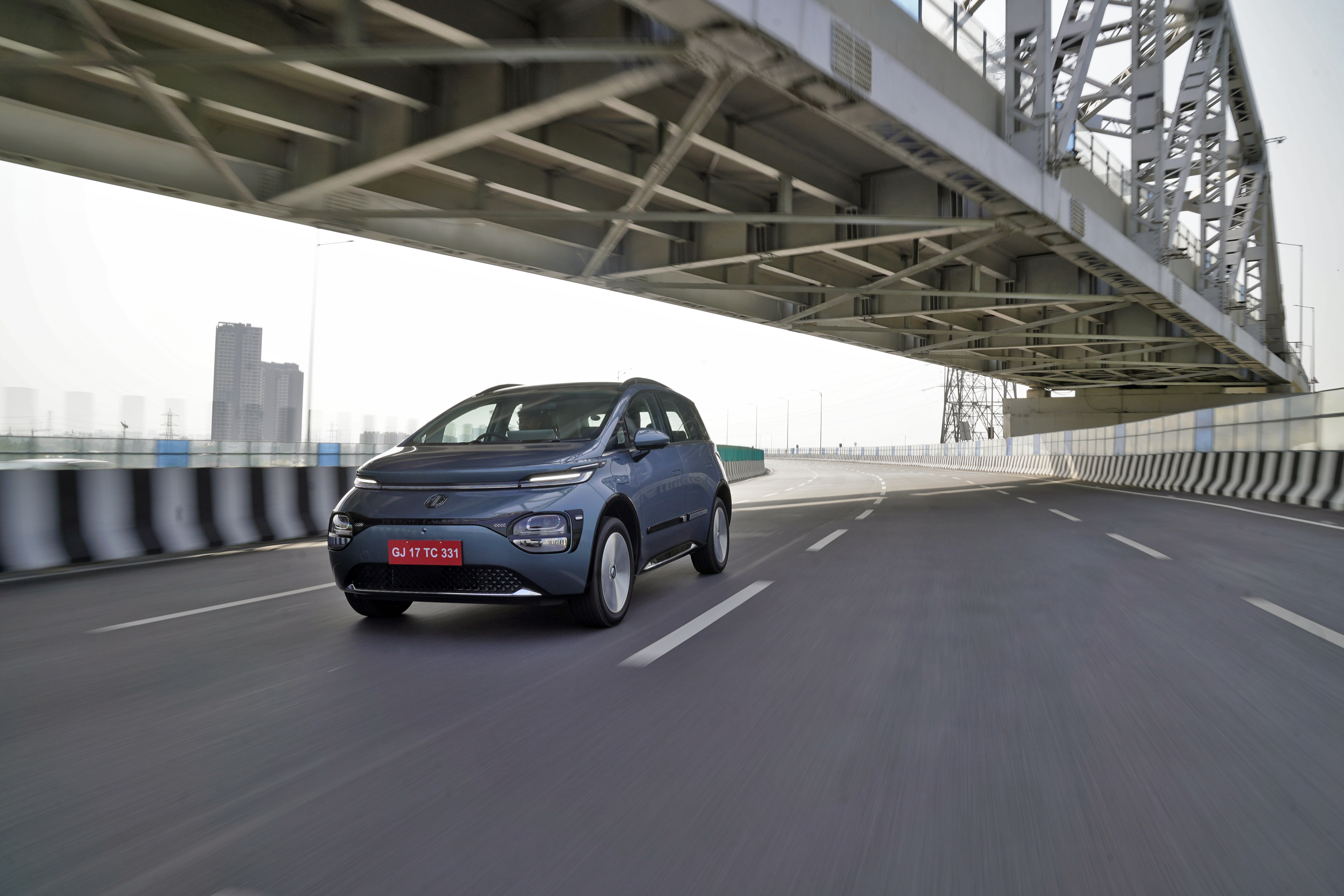
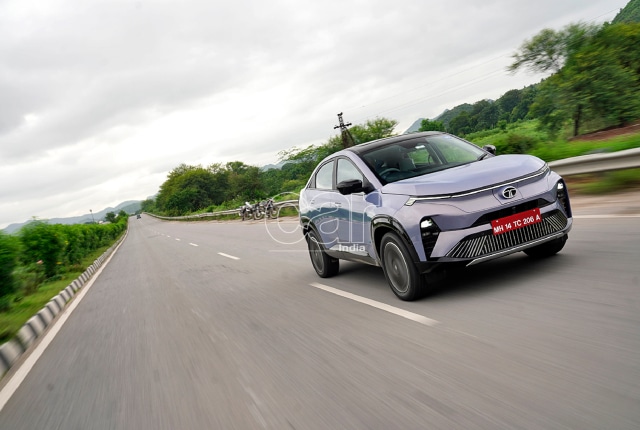
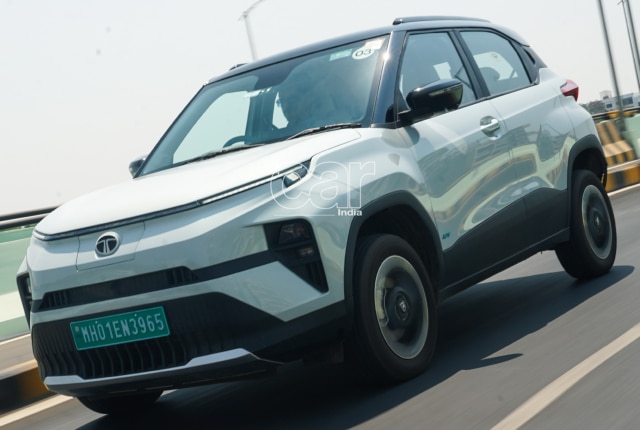




Leave a Reply